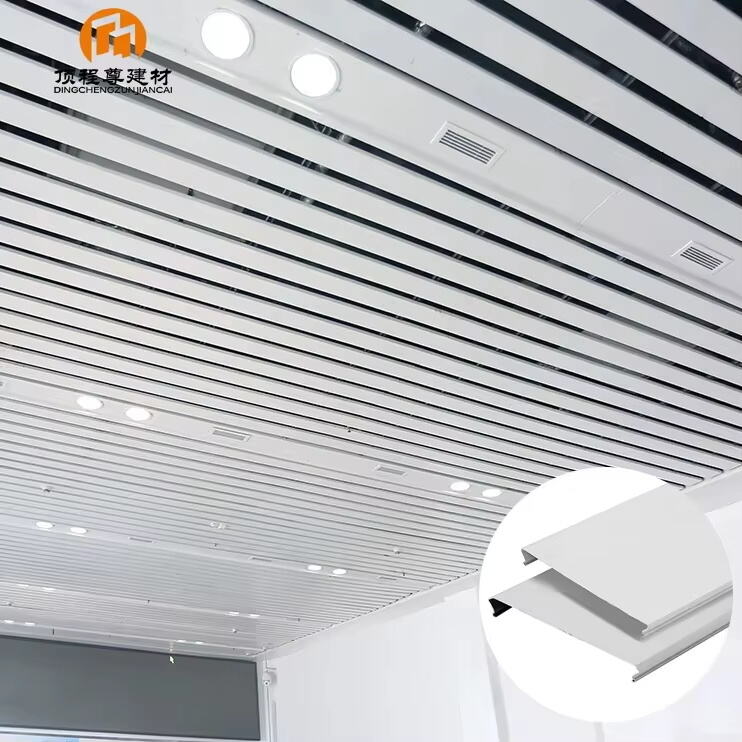Understanding the Energy Impact of Modern Building Envelope Systems
The evolution of building materials has revolutionized how we approach energy efficiency in modern architecture. Exterior aluminum panels have emerged as a groundbreaking solution that combines aesthetic appeal with remarkable thermal performance. These innovative building components are transforming the way architects and builders approach sustainable construction, offering a perfect balance of durability, efficiency, and design flexibility.
As construction technology advances, the implementation of exterior aluminum panels has become increasingly sophisticated. These panels create an additional protective layer around buildings, effectively managing heat transfer and contributing to significant energy savings. The innovative design and materials used in modern aluminum panel systems provide superior insulation properties while maintaining the structural integrity of the building envelope.

Advanced Features of Exterior Aluminum Panel Systems
Thermal Barrier Technology
Modern exterior aluminum panels incorporate cutting-edge thermal barrier technology that significantly reduces heat transfer between indoor and outdoor environments. This sophisticated system creates a break in the aluminum framework, preventing thermal bridging and maintaining consistent indoor temperatures. The thermal barrier design typically consists of polyamide strips or other insulating materials that separate the interior and exterior aluminum profiles.
The effectiveness of these thermal barriers is further enhanced by the panel's ability to reflect solar radiation. This reflective property helps minimize heat gain during summer months while retaining indoor warmth during colder periods, resulting in reduced energy consumption throughout the year.
Multi-Layer Construction Benefits
The multi-layered structure of exterior aluminum panels provides exceptional insulation properties. These panels typically feature an aluminum skin on both sides with an insulating core material sandwiched between them. This composite construction creates an effective barrier against thermal transfer while maintaining the panel's structural strength and lightweight properties.
Each layer serves a specific purpose in the overall energy efficiency strategy. The external aluminum layer provides weather resistance and solar reflection, while the core material offers superior insulation values. The interior aluminum layer adds structural stability and helps maintain consistent indoor temperatures.
Environmental Performance and Sustainability
Energy Conservation Metrics
Buildings equipped with exterior aluminum panels demonstrate impressive energy conservation statistics. Studies have shown that properly installed aluminum panel systems can reduce energy consumption by up to 30% compared to traditional building envelopes. This reduction translates to substantial cost savings and a significantly lower carbon footprint.
The energy-saving potential of these panels is particularly evident in extreme climates, where they help maintain stable indoor temperatures despite dramatic outdoor temperature fluctuations. This consistency reduces the strain on HVAC systems and extends their operational lifespan.
Sustainable Material Properties
Aluminum's inherent sustainability characteristics make it an environmentally responsible choice for building envelopes. The material is 100% recyclable without loss of quality, and many exterior aluminum panels contain a significant percentage of recycled content. This circular economy approach reduces the environmental impact of building construction while maintaining high performance standards.
The longevity of aluminum panels further contributes to their sustainability profile. With proper maintenance, these systems can last several decades, reducing the need for replacement and minimizing waste in the construction industry.
Installation and Performance Optimization
Professional Installation Requirements
The energy efficiency benefits of exterior aluminum panels are maximized through proper installation techniques. Qualified installers must ensure precise panel alignment and secure fastening to create an effective thermal envelope. The installation process includes careful attention to joint sealing and the integration of vapor barriers to prevent thermal leaks.
Proper installation also involves the strategic placement of thermal breaks and consideration of local climate conditions. These factors significantly influence the overall performance of the panel system and its contribution to building energy efficiency.
Maintenance and Long-term Performance
To maintain optimal energy efficiency, exterior aluminum panels require regular inspection and maintenance. This includes checking seals and joints for potential thermal bridges, cleaning surfaces to maintain reflective properties, and addressing any damage that could compromise the system's thermal performance.
Long-term performance monitoring helps identify opportunities for optimization and ensures the continued effectiveness of the energy-saving features. Building managers can use thermal imaging and other diagnostic tools to detect any issues that might affect energy efficiency.
Cost Considerations and Return on Investment
Initial Investment Analysis
While the upfront cost of exterior aluminum panels may be higher than some traditional cladding materials, the long-term energy savings justify the investment. Building owners typically experience positive returns through reduced energy bills, lower maintenance costs, and increased property value.
The economic benefits extend beyond direct energy savings. Improved thermal performance can lead to smaller HVAC system requirements, reduced equipment wear, and potential eligibility for green building certifications and associated incentives.
Long-term Financial Benefits
The durability and low maintenance requirements of exterior aluminum panels contribute to their favorable lifecycle cost analysis. When factoring in energy savings, reduced maintenance expenses, and the extended lifespan of HVAC equipment, the return on investment becomes increasingly attractive over time.
Buildings featuring these advanced panel systems often command premium rental rates and higher resale values, further enhancing the financial benefits of the initial investment. The combination of energy efficiency and architectural appeal creates lasting value for property owners.
Frequently Asked Questions
How long do exterior aluminum panels typically last?
With proper maintenance and installation, exterior aluminum panels can last 30-50 years or more. Their durability and resistance to weathering make them a long-lasting building envelope solution that maintains energy efficiency throughout their lifecycle.
What maintenance is required to ensure optimal energy efficiency?
Regular maintenance includes annual inspections of seals and joints, cleaning of panel surfaces to maintain reflective properties, and prompt repair of any damage. These routine tasks help preserve the system's thermal performance and extend its useful life.
Can exterior aluminum panels be installed on existing buildings?
Yes, exterior aluminum panels can be retrofitted to existing structures as part of an energy efficiency upgrade. The installation process requires careful planning and may involve modifications to the building's exterior, but the resulting energy savings often justify the renovation investment.


